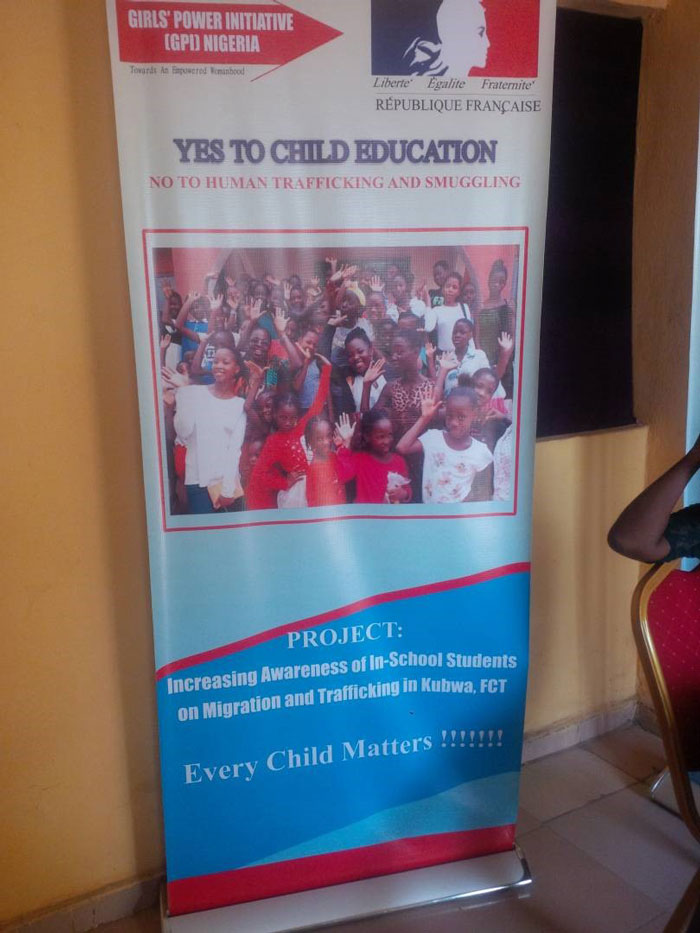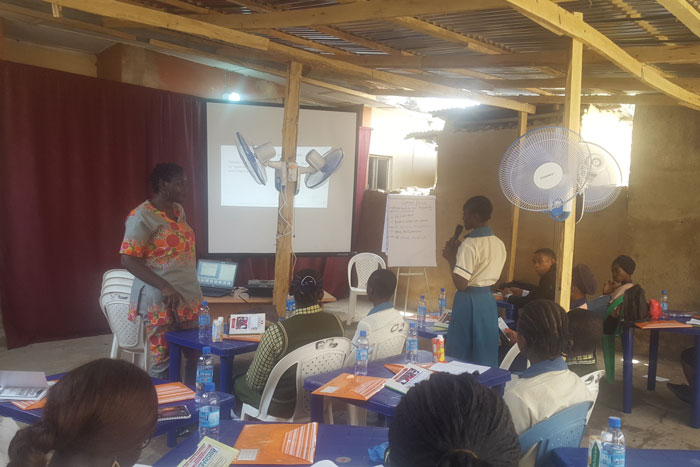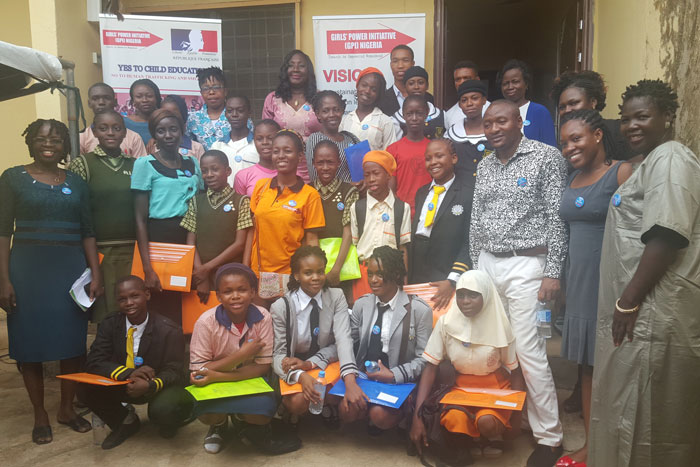 “Trafficking in Persons (TIP) is the third most lucrative business in the world, after drugs and arms sales,” an official from the Nigerian National Agency for the Prohibition of Trafficking in Persons (NAPTIP) told students during a three-day training workshop held from May 22-24 in Abuja. The workshop aimed to increase the awareness of in-school students on migration and trafficking. For three days, students from five junior secondary schools (two girls and one boy per school) gathered for the workshop at the newly launched Abuja office of Girls’ Power Initiative, an organization dedicated to empowering girls in Nigeria. The workshop discussed topics including values, self-esteem, and assertiveness. The students were trained to understand the difference between migration and trafficking; and how to identify a trafficking situation.
“Trafficking in Persons (TIP) is the third most lucrative business in the world, after drugs and arms sales,” an official from the Nigerian National Agency for the Prohibition of Trafficking in Persons (NAPTIP) told students during a three-day training workshop held from May 22-24 in Abuja. The workshop aimed to increase the awareness of in-school students on migration and trafficking. For three days, students from five junior secondary schools (two girls and one boy per school) gathered for the workshop at the newly launched Abuja office of Girls’ Power Initiative, an organization dedicated to empowering girls in Nigeria. The workshop discussed topics including values, self-esteem, and assertiveness. The students were trained to understand the difference between migration and trafficking; and how to identify a trafficking situation.
TIP is a notorious problem in Nigeria affecting many women and children. The averaged trafficked children is 15 years old. Approximately 15 million children are used for exploitative child labor.[1] Trafficking in Nigeria occurs both within (internal) and outside (external) the country. Why are children being trafficked? And, what can be done to stop TIP? These questions were the backdrop for the workshop and it was noted that the answers are multi-faceted and require action from various sectors in society including young people, parents, religious leaders and the government. Economic hardship, illiteracy and unemployment are major push factors driving TIP. Because of the lack of education on the topic, many Nigerians fall prey to TIP in their search for greener pastures. Edo state, in the southwestern part of Nigeria, is considered the hot spot for external trafficking activities. It was reported that “one in three young women had received offers to go to Europe.”[2] Some parents give their child up to be used as a “house help” (domestic worker) in another city or state in hopes of receiving the child’s income. However, many times, the parents only get a very small fraction of the child’s earnings due to deceit by the trafficker. Many of these children are also forced to end their education.
At the workshop, the students learned about methods used to recruit and control trafficking victims. One peculiar control tactic is the use of fetish oaths whereby the person being trafficked is made to swear an oath before she travels. This oath is used as a scare tactic to keep the victim from trying to escape her captor.
I was impressed by the students’ level of engagement at the workshop. One student asked a question about how someone who is being trafficked can find help. Another student asked about how to resist being a victim if the trafficker is a friend of the family. At the end of the workshop, I asked participants what information they would take back to their peers. A 12-year old girl responded, “We need to stand together and end human trafficking and smuggling. I will tell my peers that they should know how to identify trafficked victims.” A male participant stated that “It is important to have this conversation in order to educate students on their rights and their duties to prevent this from happening further in the future so we can protect other children around our communities. We have to spread the word on trafficking and migration. They are two different things.”

[1] National Agency for the Prohibition of Trafficking in Persons (NAPTIP). Fact Sheet1. http://naptip.gov.ng/index.php/downloads/finish/8/24
[2] Migration Policy Institute. Trafficking in Women from Nigeria to Europe. http://www.migrationpolicy.org/article/trafficking-women-nigeria-europe/. Accessed 30 May 2017

